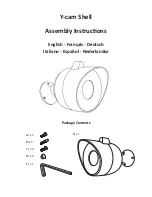
Astrophotography and Astro Time-Lapse
Astrophotography
Astrophotography refers to photography of the night time sky. It has
become far more familiar to us due to the incredible images recorded
by the Hubble Space Telescope and shared by NASA with the public
over the past two decades. But astrophotography didn't start with
the Hubble Space Telescope. In fact, it started more than 100 years
ago and has been done in large part since that time by
amateur
astronomers.
With SAM, astrophotography is now something you can do, too. You
won't be able to produce photographs that have the same image
scale as those taken by the Hubble, but you will be able to make
beautiful portraits of constellations and large regions of the Milkyway
galaxy showing star clouds, star clusters, and light and dark nebulae.
You'll be able to record time-lapse videos of auroras, and the stages
of a lunar eclipse.
First, however, there are two challenges to overcome that you don't
encounter in typical, terrestrial types of photography. One is the need
to use long exposures (e.g., greater than 30 seconds) to record dim
night sky objects. The second is the need to have the camera follow
the sky as the exposure is taking place.
The Need For Long Exposures
Unfortunately, you can't just set your camera to AUTO, aim it at
the night sky and take a picture. The night sky is far too dim for
that to work, and any attempts you make will produce seriously
underexposed results. But, you can overcome this challenge by
selecting BULB mode on your camera and using SAM's SNAP cable
16
The MilkyWay Galaxy revealed through a
long exposure astrophoto with precision
tracking.
I
I
I
I
I
I
/
, ,
�
,
,
I
I
I
I
I
I
I
I
I
I
I
I
I
I
, , ,
,
I
I
I
An equatorial mount rotates
to prevent star trailing in
your photo by precisely
countering Earth's Rotation.
connection to create much longer exposures-like a minute or two-or
ten! With a sufficiently long exposure, your camera will collect enough
light to reveal hidden details that are much too faint for our eyes to see.
But then, quite literally, you'll see the second problem!
The Need For Tracking
In your now, nicely exposed photo, the stars don't look like stars anymore
-they look like little lines and arcs of variable lengths I The problem here
is called trailing, and it becomes more noticeable as the focal length of
your lens and/or your exposure time increases.
You might think that trailing is due to the movement of the stars, but
it's not. It's due to the movement of your camera as it records those
distant stars over the course of that exposure. Your camera is moving
because it is sitting on a tripod that is sitting on the Earth, and the Earth
is rotating. This motion causes the stars, which appear to be fixed in
space from our perspective, to appear to move relative to us, and more
importantly, to our camera.
SAM overcomes this challenge by moving your camera to precisely
offset the effects of Earth's rotation while a sufficiently long exposure
of the night sky is being made. SAM's tracking capability keeps a specific
area of the sky impinging upon the same part of the camera sensor
throughout the exposure. So a star will fall on the sa
'
me set of pixels
from the beginning through the end of the exposure. The result is a
well-exposed photo of the night sky with pin point star images.
With SAM, two of the biggest challenges in doing astrophotography
are simplified and automated for you. SAM's camera control features
enable you to take exposures in excess of 30s each. SAM's tracking
ability keeps your camera on target to produce pin point star images.
As your skill level in astrophotography progresses you can set SAM up
to take multiple images of your subject, then use advanced processing
techniques like stacking to make truly remarkable celestial portraits.
17









































